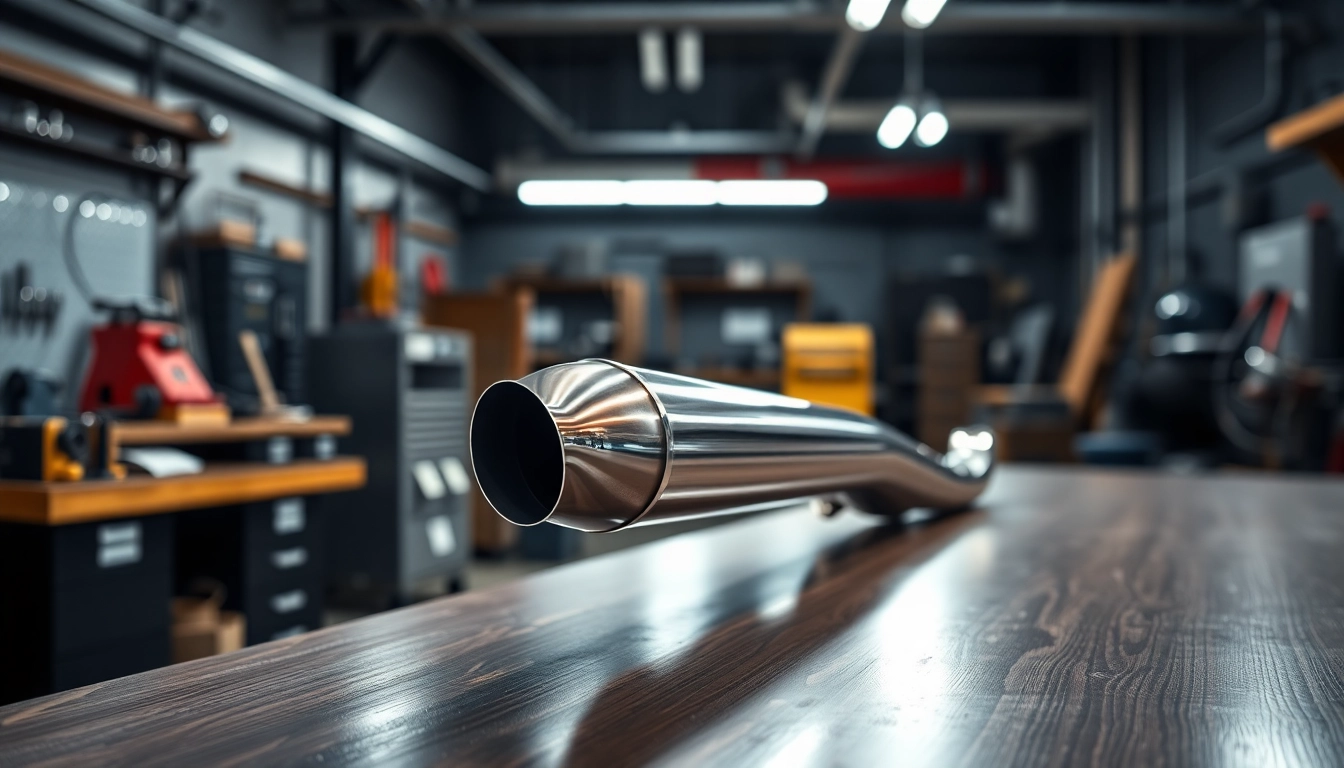
Understanding Drywall Painting Basics
What is Drywall Painting?
Drywall painting involves applying a coat of paint to drywall, a building material made from gypsum plaster sandwiched between two sheets of heavy paper. This method is prevalent in residential and commercial construction due to drywall’s affordability and ease of installation. Drywall painting not only enhances the aesthetics of a space but also adds a layer of protection to the underlying material. Before embarking on a project, understanding the necessary techniques and requirements is crucial for achieving satisfactory results. Properly done
drywall painting can transform a room’s ambiance dramatically.
Importance of Proper Preparation
The success of drywall painting hinges significantly on the preparation stage. If the surface isn’t adequately prepared, the paint may not adhere properly, leading to a lackluster finish that could peel or flake over time. Key steps include cleaning the surface to remove dust and debris, patching any holes or imperfections, and sanding to ensure a smooth finish. Additionally, applying primer on new or repaired drywall helps seal the surface, promoting better paint adhesion and a uniform color.
Common Mistakes in Drywall Painting
Many homeowners make critical errors during drywall painting that can jeopardize the quality of the finish. One common mistake is attempting to paint over unprimed drywall. Paint applied directly to drywall may absorb unevenly, leading to visible patches. Another frequent issue is neglecting to address imperfections in the drywall surface before painting, such as dents or seams, which can become prominent once the paint is applied. Additionally, not allowing sufficient drying time between coats can result in a finished product that looks unprofessional.
Choosing the Right Materials for Drywall Painting
Types of Paint Suitable for Drywall
Choosing the right paint for drywall is vital for achieving a beautiful and durable finish. The most common types of paint suitable for drywall include:
- Acrylic Paint: Known for its quick drying time and resistance to fading, acrylic paint is an excellent choice for drywalls in high-traffic areas.
- Latex Paint: This water-based paint is easy to clean and works well for interior walls, providing a wide range of finishes from matte to glossy.
- Eggshell Finish: Ideal for residential applications, eggshell finishes provide a slight sheen that helps hide imperfections while still being washable.
- Flat Paint: Best for ceilings, flat paint is also a good choice for low-traffic areas since it can help camouflage imperfections on the wall.
Essential Tools for Successful Drywall Painting
To achieve professional results, a painter should have the right tools on hand. Essential tools for drywall painting include:
- Rollers and Brushes: A high-density roller cover is ideal for smooth walls, while brushes can be used for cutting in edges and corners.
- Painter’s Tape: Using painter’s tape can help achieve clean lines, particularly around trim and doors.
- Drop Cloths: Protecting floors and furniture is crucial to avoid stains from spilled paint.
- Paint Tray: A sturdy paint tray makes it easier to load your roller with paint.
- Ladder: For reaching higher areas, a sturdy ladder is essential for safety and accessibility.
- Sanding Sponge or Block: This tool is key for smoothing the surface before painting, ensuring a clean finish.
Drywall Primers: When and Why to Use Them
Priming drywall is often viewed as an optional step, but it plays a crucial role in the painting process. Primer helps create a uniform surface that enhances paint adhesion and improves the overall appearance of the finish. There are two primary scenarios where the use of primer is recommended:
- New Drywall: Newly installed drywall has a porous surface that can absorb paint unevenly. A coat of drywall primer seals the surface, providing a base for the paint.
- Repairs: If you’ve made repairs with joint compound, applying primer helps blend the repaired areas with the rest of the wall, ensuring a consistent finish.
Step-by-Step Guide to Painting Drywall
Preparing the Drywall Surface
The preparation phase is critical in ensuring that the painting process goes smoothly and results in a high-quality finish. Follow these steps to prepare your drywall effectively:
- Inspect the Surface: Check for any holes, cracks, or imperfections that need to be fixed. Use a patching compound to fill these areas, allowing it to dry completely.
- Sanding the Surface: Once repairs are dry, sand those areas and any rough spots on the drywall using a sanding sponge or block until the surface is smooth.
- Cleaning: Remove all dust and debris from the surface using a vacuum or damp cloth. Allow the surface to dry completely before proceeding.
- Taping Edges: Apply painter’s tape along edges, trim, and any areas you want to protect from paint.
Applying Primer and Paint
With your drywall prepped, it’s time to apply primer and paint:
- Primer Application: Use a paint roller to apply a coat of primer to the drywall, starting from the top and working your way down. Use a brush for corners and edges.
- Allow to Dry: Follow the manufacturer’s instructions for drying times, typically a few hours.
- First Coat of Paint: Once the primer is dry, apply the first coat of paint using a similar technique as primer application, ensuring you cover the entire surface.
- Subsequent Coats: For the best coverage, it’s usually best to apply two to three coats of paint, allowing ample drying time between each coat.
Techniques for a Flawless Finish
To achieve a professional-looking finish, consider the following techniques:
- Feathering: When painting edges, feather the brush to blend the paint into the adjoining area. This technique helps avoid sharp lines.
- Cross-Hatching: For roller application, use a cross-hatching technique to distribute the paint evenly without leaving roller marks.
- Inspect and Touch Up: After painting, inspect the walls for any missed spots or uneven coverage, and touch up as necessary.
Tips and Tricks for Professional-Looking Results
Best Practices for Drywall Painting
To further improve your painting job, consider these best practices:
- Use Quality Paint: Invest in high-quality paints that offer better coverage and durability.
- Paint in the Right Conditions: Ensure the room is well-ventilated and that temperatures are moderate, as extreme conditions can affect paint application.
- Keep a Wet Edge: Avoid lap marks by keeping a wet edge while painting, working from one area to another without stopping.
How to Avoid Common Errors
Many pitfalls can occur during drywall painting, but with awareness, they can be avoided:
- Don’t Rush: Take your time during prep and application to ensure a thorough job.
- Avoid Thinning Paint: Unless specified by the manufacturer, don’t thin paint as it can reduce coverage and durability.
- Test Before Committing: Always test your paint color on a small area to see how it looks once applied.
Finishing Touches for a Polished Look
After painting, consider the final touches that can elevate your project:
- Removing Painter’s Tape: Remove tape while the paint is slightly wet to prevent peeling.
- Clean Up: Remove any paint spills and clean tools promptly to maintain their condition.
- Inspect for Touch Ups: Once everything is dry, inspect the walls for any inconsistencies that may require touch-ups.
Maintaining and Repairing Painted Drywall
How to Clean Painted Drywall
Regular cleaning is essential for maintaining the appearance of painted drywall. Use a soft cloth or sponge and a mild soap solution to clean the surface. Avoid using abrasive cleaners, as they can damage the paint finish. For tougher stains, a gentle scrub may be necessary.
Repair Techniques for Dents and Scratches
Over time, walls can become scratched or dented. A simple repair process involves:
- Cleaning the Area: Remove any dust or debris from the damaged area.
- Filling Dents: Use a spackle or joint compound to fill in dents or holes, smoothing over with a putty knife.
- Sand Once Dry: Once the filler is dry, sand the area until smooth.
- Touching Up with Paint: Apply a small amount of matching paint to the repaired area.
When to Repaint Your Drywall
Several signs indicate it might be time to repaint your drywall. Common indicators include visible wear and tear, fading colors, or if the paint is peeling or cracking. Rooms with high moisture (such as kitchens or bathrooms) might require more frequent repainting. Consider redecorating if your style has changed or if you desire a refreshed appearance in your home.







